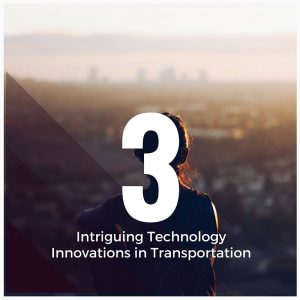Every now and then it’s fun to take a dip in the world of transportation technology and see what innovations it has come up with. It is especially fun when nature inspires those innovations — also called biomimicry — and “shares” them with engineers in a way that might be its own sharing economy.
And ParqEx has always been fascinated with sharing economies — whether the sharing is human-to-human or nature-to-human — as you can see in our own innovations in solving the parking problem in Chicago.
These three bright ideas of transportation technology are just a few examples of how the modern world is participating in a sharing economy with Nature:
1. The Mercedes-Benz Bionic Inspired By a Fish:
Mercedes-Benz turned to the ocean for its new biomimicry designed car called the Mercedes-Benz Bionic. Its design imitates the yellow boxfish in an attempt to harness the fish’s efficient use of energy.
It definitely worked, to say the least.
It reduced nitrogen oxide emissions by 80% thanks to its Selective Catalytic Reduction design, also known as the-car-looks-like-a-yellow-boxfish technology. (Nitrogen oxide, by the way, is lethal to humans, and it a common pollutant from cars. A recent report from King’s College showed that 5,900 deaths in London in 2010 were caused by this pollutant.) The exterior design of the car was modeled after the yellow boxfish because of the fish’s low coefficient of drag.
2. Cars with Bird Skulls for Protection:
Biomimetic architects (people who study nature to get ideas about their buildings) have stumbled onto something that could be a huge game changer not just for architecture but for the transportation industry.
Bird skulls.
That’s right, architects have been studying the unique formation and malleable design of bird skulls. From this research, they are developing a new building material that could withstand far more damage than current materials.
According to Foxlin, architect Andres Harris said this about the new material: “Skulls , in general,are extraordinary impact-resistant structures and extremely light at the same time as they protect the most important organs of an animal body and this performance and physical property can be applied in structure or architecture design.”
Harris also mentions in his research that this material could be used in cars, and thus provide even safer external structures that can more easily withstand violent collisions compared to current car materials.
3. The Bullet Train Inspired by a Kingfisher Bird:
A bullet train in Japan — the 500 series Shinkansen bullet train that links Shin-Osaka to Hakata — is famous for its nose, or beak, rather. Its design is inspired by the beak of the Kingfisher. The efficient drag-reducing design of the Kingfisher’s beak was emulated in a way that allowed the train to reach speeds of 185 mph.
And it also looks incredibly cool.
While reading about these nature-inspired technologies adds a sense of excitement about the future of transportation, ParqEx is also excited about what new technology is bringing to the every day driver in Chicago.
Our favorite example of that, of course, is our ParqEx app that allows drivers to easily find privately owned parking spaces that others have placed on the app as available. Drivers can rent these private spots much the same way you rent a room with AirBNB. Owners of the parking spaces get a ridiculously easy-to-earn, passive income from every parking space they rent to drivers using the app.
Nature might be sharing its phenomenal designs with engineers, but residents in Chicago are using the sharing economy — and the great app technology being birthed from it — to share their phenomenal parking spaces.
And that’s what innovation is all about.
Contact us for more insights about technology innovation in the world of parking, cars, transportation, and logistics space, and how you can benefit from these innovations.







